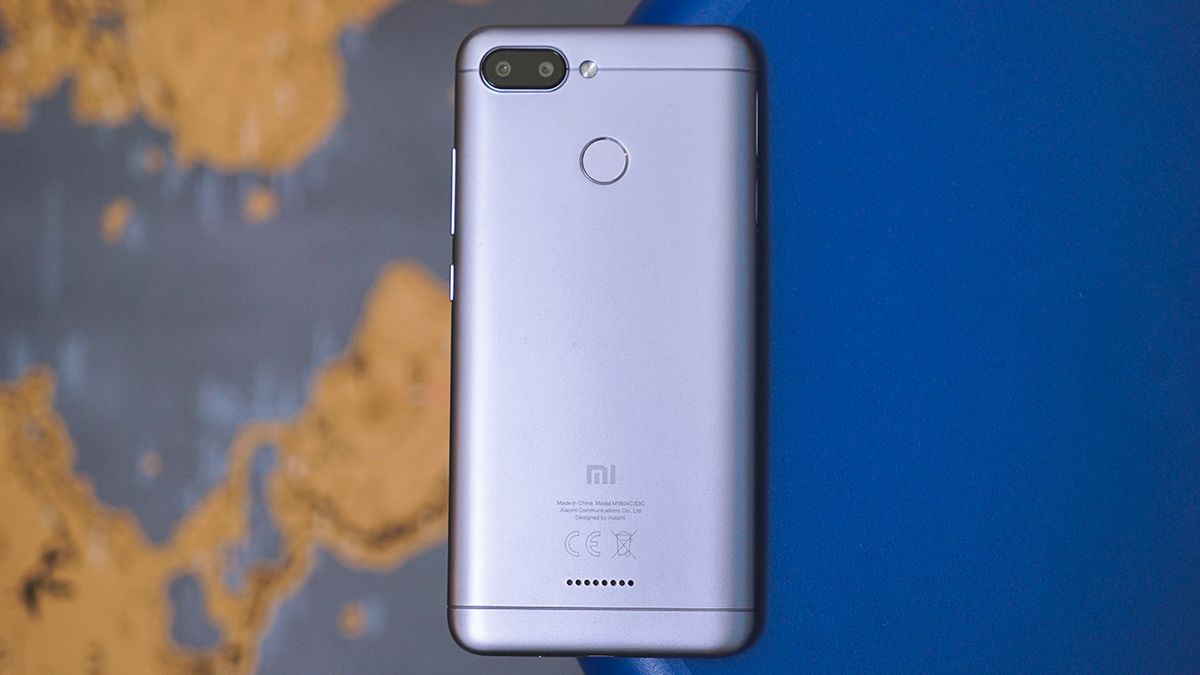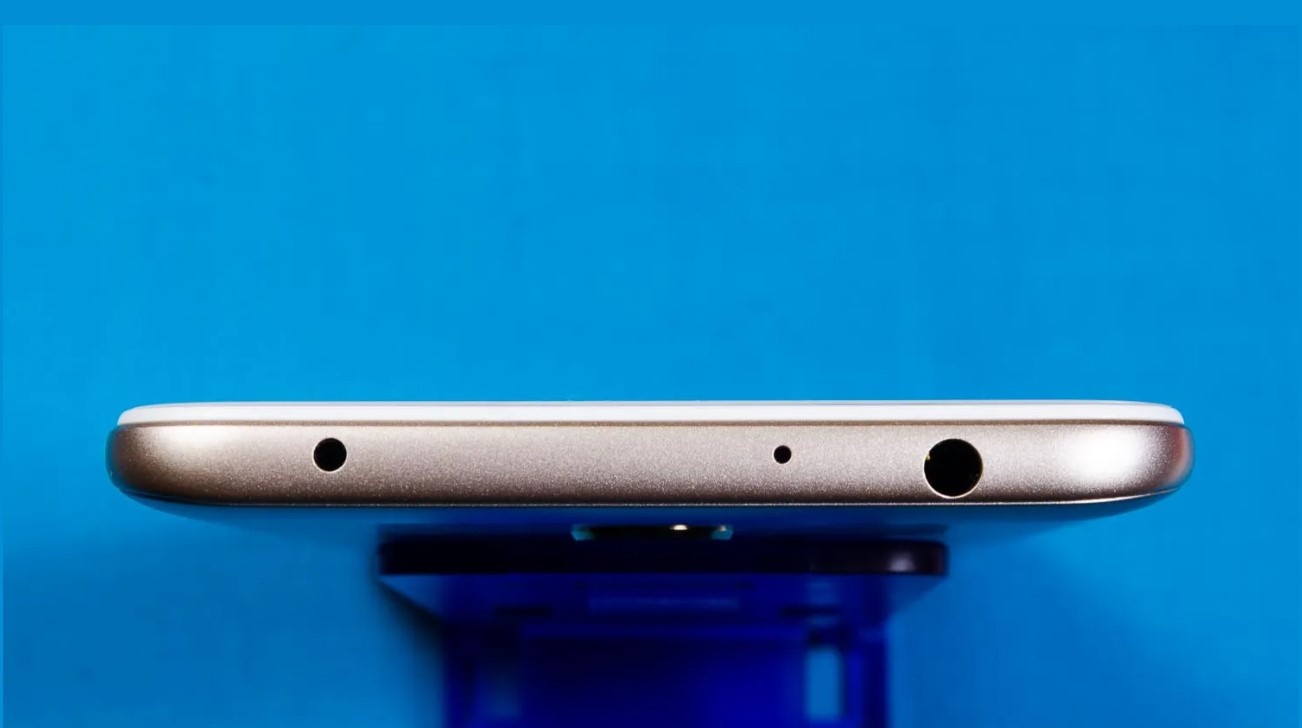Introduction
Rooting your Realme 6 can unlock a world of possibilities, allowing you to customize your device, access advanced features, and optimize its performance. By gaining root access, you can install custom ROMs, remove bloatware, and tweak system settings to personalize your smartphone experience. However, it's crucial to approach the rooting process with caution, as it involves modifying system files and voiding the device's warranty.
In this comprehensive guide, we will walk you through the step-by-step process of rooting your Realme 6. Before diving into the technical aspects, it's important to understand the implications of rooting. While it offers unparalleled freedom and control over your device, it also carries certain risks. Rooting your phone can potentially expose it to security vulnerabilities and may lead to the loss of official software updates. Therefore, it's essential to weigh the pros and cons before proceeding with the rooting process.
Throughout this guide, we will provide detailed instructions and insights to help you navigate the rooting journey with confidence. From enabling Developer Options to flashing custom recovery and ultimately gaining root access, each step is crucial in ensuring a successful and safe rooting experience. By following this guide, you will not only unlock the full potential of your Realme 6 but also gain a deeper understanding of the technical aspects of Android customization.
So, if you're ready to embark on this exciting journey of customization and optimization, let's dive into the step-by-step process of rooting your Realme 6. Get ready to unleash the true power of your device and elevate your smartphone experience to new heights.
Step 1: Enable Developer Options
Enabling Developer Options is the first crucial step in the process of rooting your Realme 6. This hidden menu provides access to advanced settings and debugging tools that are essential for customizing and optimizing your device. Here's a detailed guide on how to enable Developer Options on your Realme 6:
-
Navigate to Settings: Open the "Settings" app on your Realme 6. This can usually be found in the app drawer or by swiping down from the top of the screen and tapping the gear icon.
-
About Phone: Scroll down and select "About Phone" from the list of options. This section contains essential information about your device, including the software version and hardware details.
-
Tap Build Number: Locate the "Build Number" entry in the "About Phone" section. Tap on "Build Number" repeatedly (usually seven times) in quick succession. You will see a message indicating that you are now a developer.
-
Enter PIN/Password: If prompted, enter your device's PIN or password to confirm the action. This step is necessary to prevent unauthorized access to Developer Options.
-
Developer Options Enabled: Once you have successfully tapped the "Build Number" multiple times and entered your PIN or password, Developer Options will be enabled on your Realme 6.
Enabling Developer Options grants you access to a plethora of advanced settings and debugging tools that are instrumental in the rooting process. From USB debugging to OEM unlocking, these options play a pivotal role in customizing and modifying your device's software. By following this simple yet crucial step, you are one step closer to unlocking the full potential of your Realme 6 and embarking on the exciting journey of rooting and customization.
With Developer Options now enabled, you are ready to proceed to the next step in the rooting process, which involves unlocking the bootloader of your Realme 6. This pivotal step sets the stage for further customization and optimization, paving the way for a truly personalized smartphone experience. So, let's move on to the next step and continue our journey towards rooting the Realme 6.
Step 2: Unlock Bootloader
Unlocking the bootloader is a critical milestone in the process of rooting your Realme 6. The bootloader acts as a security checkpoint, ensuring that only verified software is allowed to run on your device. By unlocking the bootloader, you gain the freedom to install custom firmware and make profound modifications to the operating system. However, it's important to note that unlocking the bootloader will erase all data on your device, so it's crucial to back up any important files before proceeding.
Here's a detailed guide on how to unlock the bootloader of your Realme 6:
-
Backup Your Data: Before initiating the bootloader unlocking process, it's essential to back up all your important data, including photos, videos, documents, and any other files stored on your device. This precautionary step ensures that you don't lose any valuable information during the bootloader unlocking process.
-
Power Off Your Device: Begin the process by turning off your Realme 6. Press and hold the power button, then select "Power off" from the on-screen options. Once the device is powered off, proceed to the next step.
-
Boot into Fastboot Mode: To unlock the bootloader, you need to boot your Realme 6 into fastboot mode. Press and hold the power button and volume down button simultaneously until the fastboot mode screen appears. This mode provides a direct communication channel with the bootloader, allowing you to execute commands for unlocking it.
-
Connect Your Device to PC: Using a USB cable, connect your Realme 6 to your computer. Ensure that the necessary USB drivers are installed on your computer to facilitate the communication between the device and the PC.
-
Launch Command Prompt or Terminal: On your computer, open the command prompt (Windows) or terminal (Mac or Linux) and navigate to the directory where the ADB and Fastboot tools are installed. These tools are essential for executing commands to unlock the bootloader.
-
Execute Unlock Command: In the command prompt or terminal, enter the following command to initiate the bootloader unlocking process:
fastboot flashing unlock. Press Enter to execute the command. This action triggers the bootloader unlocking process on your Realme 6. -
Confirmation on Device: On your Realme 6, you will be prompted to confirm the bootloader unlocking process. Use the volume keys to navigate and the power button to select "Unlock the bootloader." This step is crucial, as it ensures that the unlocking process is authorized by the device owner.
-
Bootloader Unlocked: Once the confirmation is made, the bootloader unlocking process will commence. Your Realme 6 will erase all data and unlock the bootloader, paving the way for advanced customization and rooting.
Unlocking the bootloader of your Realme 6 is a pivotal step that sets the stage for further customization and optimization. With the bootloader now unlocked, you are ready to proceed to the next steps in the rooting process, which involve installing ADB and Fastboot, downloading custom recovery, and ultimately gaining root access. Each step brings you closer to unlocking the full potential of your Realme 6 and embarking on a journey of personalized smartphone customization and optimization.
Step 3: Install ADB and Fastboot
Installing ADB (Android Debug Bridge) and Fastboot is an essential prerequisite for the rooting process of your Realme 6. These versatile tools serve as a bridge between your computer and Android device, enabling you to execute commands, transfer files, and communicate with the device's bootloader. By installing ADB and Fastboot, you gain the capability to perform advanced operations that are integral to the rooting process, such as flashing custom recovery and gaining root access.
Here's a detailed guide on how to install ADB and Fastboot on your computer:
-
Download Android SDK Platform Tools: Begin by downloading the Android SDK Platform Tools package from the official Android Developers website. This package includes ADB, Fastboot, and other essential tools required for interacting with Android devices.
-
Extract the Platform Tools: Once the download is complete, extract the contents of the Platform Tools package to a convenient location on your computer. It's recommended to create a dedicated folder for these tools to ensure easy access and organization.
-
Open Command Prompt or Terminal: Navigate to the directory where the Platform Tools are extracted. On Windows, you can hold the Shift key and right-click within the folder, then select "Open PowerShell window here" or "Open command window here." On Mac or Linux, open the terminal and use the "cd" command to navigate to the extracted directory.
-
Test ADB and Fastboot: To ensure that ADB and Fastboot are functioning correctly, connect your Realme 6 to the computer via a USB cable. In the command prompt or terminal, enter the command "adb devices" and press Enter. This command should display the connected devices, confirming that ADB is working as expected. Similarly, you can test Fastboot by entering the command "fastboot devices" while your device is in fastboot mode.
-
Add Platform Tools to System Path (Optional): For convenience, you can add the directory containing the Platform Tools to your system's PATH environment variable. This allows you to execute ADB and Fastboot commands from any location in the command prompt or terminal without specifying the full path to the tools.
By following these steps, you will successfully install ADB and Fastboot on your computer, laying the foundation for executing advanced commands and operations essential to the rooting process. With ADB and Fastboot at your disposal, you are now prepared to proceed to the next steps, including downloading custom recovery and ultimately gaining root access to your Realme 6.
Step 4: Download Custom Recovery
Downloading a custom recovery is a pivotal step in the process of rooting your Realme 6. Custom recovery, such as TWRP (Team Win Recovery Project), serves as a powerful tool for performing advanced operations on your device, including flashing custom ROMs, creating and restoring backups, and gaining root access. Unlike the stock recovery provided by the manufacturer, custom recovery offers a wide array of features and functionalities that are essential for customizing and optimizing your device.
Here's a detailed guide on how to download custom recovery for your Realme 6:
-
Research and Identify Compatible Custom Recovery: Begin by researching and identifying a custom recovery that is compatible with your Realme 6. It's crucial to ensure that the custom recovery you choose is specifically designed for your device model and software version. Visit reputable Android development forums and websites to find the appropriate custom recovery for your Realme 6.
-
Download the Custom Recovery Image: Once you have identified the compatible custom recovery, download the recovery image file to your computer. The recovery image file is typically provided in a .img format and contains the necessary files and scripts to install the custom recovery on your device. Ensure that you download the recovery image from a trusted source to avoid potential issues with corrupted or incompatible files.
-
Verify the Integrity of the Downloaded File: After downloading the custom recovery image, verify the integrity of the file to ensure that it has been downloaded correctly and is free from any errors or corruption. You can use checksum verification tools or compare the file's hash value with the official hash provided by the custom recovery developer to confirm its authenticity.
-
Transfer the Recovery Image to Your Device: Once the custom recovery image is verified, transfer it to your Realme 6. You can use a USB cable to connect your device to the computer and then copy the recovery image file to a convenient location on your device's internal storage. It's important to remember the location where the file is saved, as you will need to access it during the flashing process.
By following these steps, you will successfully download the custom recovery image for your Realme 6, setting the stage for the next crucial step in the rooting process: flashing the custom recovery onto your device. With the custom recovery image ready, you are one step closer to gaining root access and unlocking the full potential of your Realme 6.
Step 5: Boot into Fastboot Mode
Booting your Realme 6 into fastboot mode is a crucial step in the rooting process, as it provides direct access to the device's bootloader and allows for the execution of advanced commands for customization and modification. Fastboot mode, also known as bootloader mode, serves as a gateway to performing operations such as flashing custom recovery and unlocking the bootloader. By following the steps outlined below, you can seamlessly boot your Realme 6 into fastboot mode and prepare it for the subsequent stages of the rooting process.
-
Power Off Your Device: Begin by powering off your Realme 6. Press and hold the power button until the power off menu appears, then select "Power off" to shut down the device. It's essential to ensure that the device is completely powered off before proceeding to the next step.
-
Enter Fastboot Mode: With the device powered off, press and hold the power button and volume down button simultaneously. Continue holding both buttons until the fastboot mode screen appears. In fastboot mode, the screen will display essential information about the device, including the bootloader status and connectivity.
-
Verify Fastboot Mode: Once your Realme 6 enters fastboot mode, you can verify its connectivity to the computer by using the command prompt or terminal on your PC. Connect your device to the computer using a USB cable and execute the command "fastboot devices" in the command prompt or terminal. If your device is successfully detected, it will be listed, confirming that it is in fastboot mode and ready for further commands.
Booting your Realme 6 into fastboot mode sets the stage for executing critical commands related to the rooting process, such as flashing custom recovery and unlocking the bootloader. This mode provides a direct communication channel with the device's bootloader, enabling you to perform advanced operations that are instrumental in customizing and optimizing your device. With your Realme 6 now in fastboot mode, you are prepared to proceed to the next steps, including flashing custom recovery and ultimately gaining root access to unlock the full potential of your device.
Step 6: Flash Custom Recovery
Flashing a custom recovery onto your Realme 6 is a pivotal step in the rooting process, as it empowers you to perform advanced operations such as installing custom ROMs, creating backups, and gaining root access. Custom recovery, such as TWRP (Team Win Recovery Project), offers a feature-rich environment that goes beyond the limitations of the stock recovery provided by the manufacturer. By following the steps outlined below, you can seamlessly flash a custom recovery onto your Realme 6, unlocking the gateway to unparalleled customization and optimization.
-
Access Fastboot Mode: Ensure that your Realme 6 is in fastboot mode, as this mode provides the necessary environment for flashing custom recovery. If your device is not in fastboot mode, follow the previous step to boot it into this mode before proceeding with the flashing process.
-
Connect Your Device to the Computer: Using a USB cable, connect your Realme 6 to your computer. This connection is essential for transferring the custom recovery image to your device and executing the flashing commands from your computer.
-
Navigate to the Directory Containing ADB and Fastboot Tools: Open the command prompt (Windows) or terminal (Mac or Linux) on your computer and navigate to the directory where the ADB and Fastboot tools are installed. This is the same directory where you tested ADB and Fastboot in the previous steps.
-
Transfer the Custom Recovery Image to the ADB and Fastboot Directory: Copy the custom recovery image file that you downloaded earlier to the same directory where the ADB and Fastboot tools are located. This ensures that the flashing process can be executed seamlessly from this location.
-
Execute the Flashing Command: In the command prompt or terminal, enter the following command to flash the custom recovery onto your Realme 6:
fastboot flash recovery <recovery_image_filename.img>
Replace
<recovery_image_filename.img>with the actual filename of the custom recovery image. Press Enter to execute the command, initiating the flashing process. -
Verify the Flashing Process: Once the flashing command is executed, monitor the command prompt or terminal for any error messages or feedback regarding the flashing process. If the process completes without errors, the custom recovery has been successfully flashed onto your Realme 6.
-
Boot into Custom Recovery: After flashing the custom recovery, you can boot your Realme 6 directly into the newly installed recovery environment. Use the volume keys to navigate and the power button to select the "Recovery" option from the fastboot mode screen. This action will boot your device into the custom recovery environment, confirming the successful installation.
By following these steps, you have successfully flashed a custom recovery onto your Realme 6, unlocking a realm of possibilities for customization and optimization. With the custom recovery in place, you are now poised to proceed to the final step of gaining root access, elevating your smartphone experience to new heights.
Step 7: Root Realme 6
Rooting your Realme 6 marks the culmination of a transformative journey, unlocking the full potential of your device and granting you unprecedented control over its functionality and customization. By gaining root access, you can delve into the inner workings of the Android operating system, enabling advanced modifications, optimizations, and the installation of powerful apps that harness the true capabilities of your device. However, it's essential to approach the rooting process with caution and a clear understanding of the implications and risks involved.
To root your Realme 6, you can utilize various methods, including the installation of custom recovery and the execution of specific commands to gain root privileges. One popular approach involves using Magisk, a powerful and versatile tool that not only facilitates the rooting process but also offers systemless root capabilities, ensuring seamless integration with your device's firmware and preserving the integrity of the system.
Here's a detailed guide on how to root your Realme 6 using Magisk:
-
Download Magisk: Begin by downloading the latest version of Magisk onto your computer. Ensure that you obtain the official release from a trusted source to guarantee the authenticity and integrity of the tool.
-
Transfer Magisk to Your Device: Connect your Realme 6 to the computer using a USB cable and transfer the Magisk installation package to a convenient location on your device's internal storage. Remember the location where the file is saved, as you will need to access it during the rooting process.
-
Boot into Custom Recovery: Boot your Realme 6 into the custom recovery environment that you previously flashed onto the device. This can typically be achieved by entering fastboot mode and selecting the "Recovery" option from the menu.
-
Install Magisk: Within the custom recovery environment, navigate to the location where the Magisk installation package is stored on your device. Select the package and initiate the installation process. Once the installation is complete, reboot your device.
-
Verify Root Access: After your Realme 6 reboots, you can use root checker apps or terminal commands to verify that the rooting process was successful. These tools will confirm whether your device now has root privileges, granting you unrestricted access to the Android system.
By following these steps, you have successfully rooted your Realme 6 using Magisk, unlocking a world of possibilities for customization, optimization, and the installation of powerful root-enabled apps. It's important to exercise caution and responsibility when utilizing root access, as it grants elevated privileges that can impact the stability and security of your device. With root access now at your disposal, you are empowered to explore the endless potential of your Realme 6 and elevate your smartphone experience to new heights.
Conclusion
In conclusion, the process of rooting your Realme 6 is a transformative journey that unlocks the full potential of your device, granting you unprecedented control over its functionality and customization. Throughout this comprehensive guide, we have navigated through the essential steps, from enabling Developer Options to ultimately gaining root access using Magisk. Each stage of the rooting process has been carefully outlined, emphasizing the importance of caution, thorough research, and a clear understanding of the implications involved.
By enabling Developer Options and unlocking the bootloader, you laid the foundation for advanced customization and optimization. The installation of ADB and Fastboot tools equipped you with the essential capabilities to interact with your Realme 6 at a deeper level, while the process of downloading and flashing a custom recovery expanded the horizons of customization, offering a feature-rich environment beyond the limitations of the stock recovery.
The final step of rooting your Realme 6 using Magisk marked the pinnacle of this journey, granting you systemless root access and opening the doors to a myriad of possibilities for customization, optimization, and the installation of powerful root-enabled apps. However, it's crucial to approach root access with responsibility, as it grants elevated privileges that can impact the stability and security of your device.
As you embark on this journey of rooting and customization, it's important to weigh the benefits of root access against the potential risks, including security vulnerabilities and the loss of official software updates. Additionally, it's essential to stay informed about the latest developments in the Android rooting community and exercise caution when making system-level modifications to your device.
Ultimately, the decision to root your Realme 6 is a personal one, driven by the desire for unparalleled customization and optimization. By following this guide, you have gained a deeper understanding of the technical aspects of Android customization and have unlocked the full potential of your device. Whether you choose to embrace root access or explore the myriad of customization options available, this journey has equipped you with the knowledge and tools to elevate your smartphone experience to new heights.
























